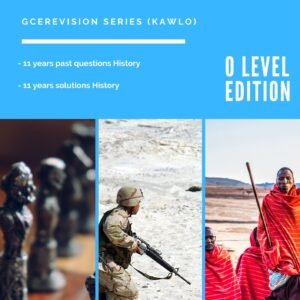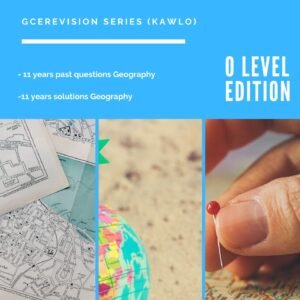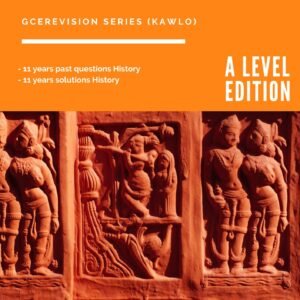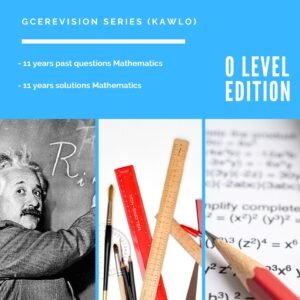Cameroon GCE A/L June 2018 Geology paper 2
Cameroon GCE A/L June 2018 Geology paper 2
GEOLOGY 2018:
Time: 3 hours
Code: 755
INSTRUCTIONS: answer four questions, one from each section. All question carries equal marks. You are reminded of the value of clear sketches, even when not specifically demanded by the wording of the question, and of the necessity for good English and orderly presentation in your answer.
SECTION A
- (a) explain five ways by which fossils have been used to determine ancient climates. (15marks)
(b) Write a brief geologic history of the bivalves (5 marks)
(c) Draw an anisomyrian bivalve shell and label the following parts: muscles scar, dentition, ligament. (5 marks)
(Total = 25 MARKS)
- (a) outline the nature of hard parts of organisms that make them suitable for fossilization. (7 marks)
(b) discuss the effects of transportation, diagenesis and post depositional changes on fossilization. (18 marks)
(Total = 25 MARKS)
- (a) what do you understand by an unconformity? (6 marks)
(b) how can you recognize the following unconformities on geological maps?
(i) Angular unconformity (3 marks)
(ii) Heterolithic unconformity; (3 marks)
(c) state the characteristics of:
(i) parallel unconformities (4 marks)
(ii) Non-depositional unconformity (4 marks)
(d) Outline the importance of unconformities (5 marks)
(Total = 25 MARKS)
SECTION B
- (a) Define the term magmatic differentiation (3 marks)
(b) Describe the following processes of magmatic differentiation:
(i) Crystal settling (5 marks)
(ii) Mechanical filter pressing (5 marks)
(c) describe the following processes in the formation of igneous rocks: (4 marks)
(i) Assimilation; (4 marks)
(ii) Hybridization; (4 marks)
(iii) Liquid immiscibility (4 marks)
(Total = 25 MARKS)
- The table below list properties of four minerals collected from a quarry
| Mineral | Color/lustre | Hardness | Other properties |
| A | White | Scratch by copper coin | Cleaves into rhombs and reacts with dilute HCL |
| B | Silver-grey, metallic | Scratch by Mineral A | Cleaves easily into cubes |
| C | Dark brown, resinous | Harder than copper coin | Cubic crystals |
| D | Pinkish, white | Same hardness as mineral A | Denser than minerals A and C but less dense than B |
(a)
(i) A specimen of mineral B had a mass of 375g and a volume of 50cm3, what is the density of this mineral? (3 marks)
(ii) Name minerals A, B, C and D (2 marks)
(iii) Give the chemical composition of minerals A and B (3 marks)
(iv) State the economic importance of minerals A, B, C and D (3 marks)
(v) Which of the minerals could be classified as a rock forming mineral? Name a rock made up of this mineral. (2 marks)
(vi) how many sets of cleavage planes does mineral A have? (2 marks)
(b) By use of streak plate and a copper coin explain how you could distinguish between: magnetite, malachite, fluorite, halite and hematite (10 marks)
(Total = 25 MARKS)
- (a) Name the three main types of rock (3 marks)
(b) Explain how each of the rock types mentioned in (a) above were formed (15 marks)
(c) outline the importance of rock to a geologist? (7 marks)
(Total = 25 MARKS)
SECTION C
- (a) what do you understand by maturity of a sediment? (3 marks)
(b) Explain the compositional and textural maturity of a sediment (9 marks)
(c) Relate the maturity of a sediment to the various stages of a river (13 marks)
(Total = 25 MARKS)
- (a) discuss the various features associated with sea level changes and the nature of the evidence (17 marks)
(b) briefly differentiate between:
(i) Bars and spits; (4 marks)
(ii) Tombolo and cuspate foreland (4 marks)
(Total = 25 MARKS)
- (a) What do you understand by exogenetic mineral deposits? (5 marks)
(b) With examples, outline the different types of exogenetic mineral deposition (20 marks)
(Total = 25 MARKS)
SECTION D
- (a) Describe five different topographic features found on the ocean floor (10 marks)
(b) Define the seafloor spreading hypothesis and explain three evidences that have been proposed to prove its existence (15 marks)
(Total = 25 MARKS)
- (a) Explain how the following can trigger mass movement of rock and soil:
- Angle of slope; (4 marks)
- Rock types; (4 marks)
- Groundwater or rainfall; (4 marks)
- Ground vibration. (4 marks)
(b) outline the attempts that are made to manage and control unstable slopes (9 marks)
(Total = 25 MARKS)
- (a) Explain the classification of crystals into systems and classes (8 marks)
(b) Outline the symmetry elements of the following;
(i) Galena; (3 marks)
(ii) Calcite; (3 marks)
(ii) Barytes (3 marks)
(c) Define the following forms as used in crystallography
(i) Octahedron; (2 marks)
(ii) Pyramid; (2 marks)
(iii) Dome; (2 marks)
(iv) Pinacoid (2 marks)
(Total = 25 MARKS)















BLISS
September 15, 2024
i find it hard to download GEOLOGY PAST QUESTIONS need help